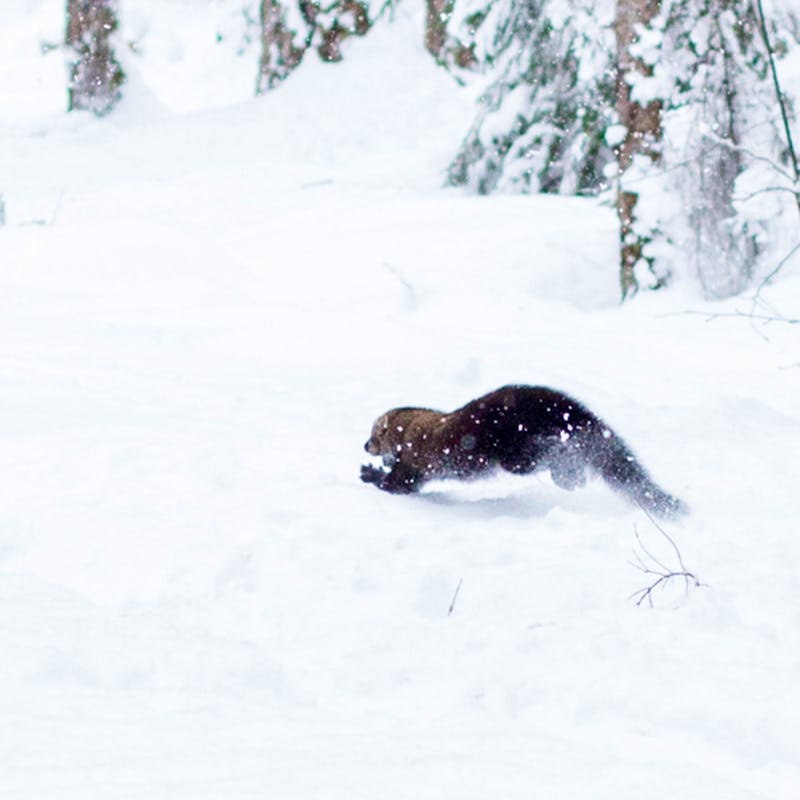Yellowstone National Park has become a symbol of the power of wolves to fundamentally alter the ecology of the land and bring nature back into balance. Since the reintroduction of gray wolves into the park over 20 years ago, the park has transformed and their presence has brought new life in streams and rivers.
Through a “cascade effect,” the presence of wolves increase the diversity of life and function throughout entire ecosystems, all the way down to water quality. In Yellowstone, this has translated into less browsing from elk which has allowed for the regeneration of streambank vegetation like grasses, and willow, aspen and cottonwood trees, and the creation of more habitat for native birds, fish, beavers and other species. It has even lead to the slowing and cooling of waterways and the improvement of water quality.
Scientists suggest that the landscape of the Southwest, which is ecologically incomplete without wolves, could see a similar rebirth from an increased presence of Mexican gray wolves. The already stunning vistas of the American Southwest would reap benefits to biodiversity and ecological health from a strong commitment to restoring wolves to their historic lands, but none of this will be possible if the new proposed recovery plan by the U.S. Fish and Wildlife Service (FWS) moves forward unchanged.
Long-Awaited Recovery Plan Falls Short
 It’s been 35 years since Mexican gray wolves had anything resembling a recovery plan. Since 1982, the FWS has unsuccessfully convened three recovery teams to develop a legitimate recovery plan with no success. However, a court settlement between the FWS and several conservation groups, including Defenders of Wildlife, requires the agency to produce a final recovery plan by November 2017.
It’s been 35 years since Mexican gray wolves had anything resembling a recovery plan. Since 1982, the FWS has unsuccessfully convened three recovery teams to develop a legitimate recovery plan with no success. However, a court settlement between the FWS and several conservation groups, including Defenders of Wildlife, requires the agency to produce a final recovery plan by November 2017.
On June 29, the FWS released its proposed recovery plan that would take the Mexican gray wolf off the endangered species list once the population reaches 320 animals in southern New Mexico and Arizona, and 170 in Mexico and the threats to the species have been removed. These goals are contradicted by independent wolf experts and the best available science, which show that 320 is nowhere near the number of wolves needed for recovery.
On top of this, the plan does not require that these two populations be connected and wolf biologists agree that securing a future for Mexican gray wolves requires a minimum of three interconnected populations with occasional inter-breeding. These would include two new populations centered in the Grand Canyon and adjoining areas in southern Utah and the southern Rocky Mountains of New Mexico and Colorado. However, the plan arbitrarily draws boundaries for wolf recovery areas that would prevent Mexican gray wolves from accessing these essential habitats.
The plan also turns decision making authority for wolf releases over to the states, thus abandoning its federal oversight responsibility for this aspect of wolf recovery. These states have a long track record of hostility toward lobo recovery.
Despite the science and the input of numerous wolf biologists, the FWS has chosen to proceed without addressing these major disparities.
Keeping up the Fight for Lobos
In July, Defenders of Wildlife staff, members and supporters showed up in large numbers at public meetings in Arizona and New Mexico to voice our concerns over the FWS’s draft recovery plan. Before the public meetings, hosted by the FWS in Flagstaff, Truth or Consequences, and Albuquerque, wolf supporters held rallies and made their voices heard loud and clear. Wolf advocates made a strong showing, often well outnumbering those opposed to wolf recovery at the meetings.
Seeing the energetic turnout at the rallies and public hearings was a great reminder of how much people of the Southwest care about the recovery of Mexican gray wolves and long for our very own “Yellowstone moment.”
If we raise our voices for wildlife, we can see Mexican gray wolves thriving in the Southwest again and the landscape and ecology thriving because of them.





